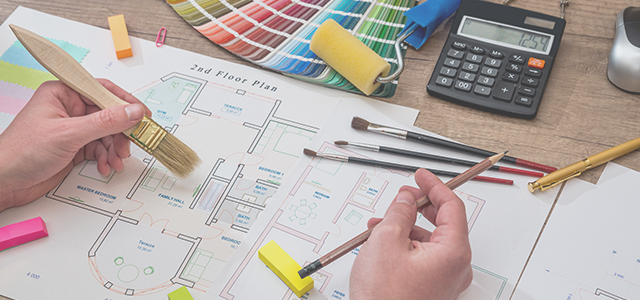In this article:

Ending up with a design you love and a budget you can deliver on is any renovator’s dream outcome. Unfortunately, many renovation budgets come unstuck when faced with unforeseen problems. Here we look at common ways renovators lose money and what to do to protect yourself.
Sensible services
Plumbing and electrical costs can quickly escalate, particularly when renovating older homes. Costs you might encounter include rewiring; re-routing HVAC ducts and upgrades on fixtures and fittings to meet current standards.
New wiring, smoke detectors, plumbing fixtures, energy efficient light fittings and water efficient tapware are just a few of the upgrades that may be required to meet building approvals.
To reign in the costs, plan early on in the project to minimise the plumbing runs by locating the new wet areas near the old wet regions. Considering that water heating is the second largest segment of household energy use in Australia, aim to keep hot water pipes as short as possible to minimise heat loss. Locate the water heater close to where you use it the most, especially the kitchen where you use small, frequent amounts of hot water.
Lock down your plumbing layout before you start your build because changes afterwards are either not possible or costly once construction begins.
When purchasing prime cost items like basins, baths and taps, remember there are many options for saving costs, such as buying through online auction sites and waiting for sales.
Tip!
Don’t focus too much on trends as these come and go; think comfort and ease of living instead.
Structural design
Don’t design first and think about structure later. Layouts that require significant steel and engineered timber for load bearing and bracing will cost more than conventional building methods. Aim to integrate the structural design from the start to ensure the layout chosen will be economically efficient.
Tip!
Before you get too involved in a particular design, check building regulations. Look on your local council website or run your proposal past a council planner to find out what might restrain your plans such as boundary setbacks, building heights, fire safety and local council planning provisions.
Comprehensive costs
One of the biggest mistakes you want to avoid is to underestimate your costs. When drawing up a budget, it’s essential to include the costs that may not be obvious at first glance. Examples of these include council fees, insurance, scaffolding, rubbish removal, furniture storage and pet accommodation. If you need an alternative place to live, calculate the cost of rent on top of mortgage repayments, as well as the doubling up of utility bills.
Draw up a written agreement with your builder/tradespeople that spells out exactly what your expectations are and how costs will be affected if unexpected problems arise.
Tip!
A potential money-saving option is to put your furniture in storage and rent somewhere smaller, rather than trying to rent a home big enough for you and all your possessions.
Always put aside a contingency fund for unexpected material, labour or associated costs. Organising a professional home inspection during the planning phase is an invaluable way of uncovering any surprises that can throw your renovation budget and schedule off track, like termites or faulty wiring.
Excavation savings
Getting your site ready is another area where money quickly disappears. Apart from the cost of earthworks, there can be extra council approval costs or the expense of hitting rock when digging.
To protect your budget, aim to reuse the dirt that you excavate for landscaping work rather than paying the high costs of removal. If you’re planning a pool, for example, get your masterplan written down now to reuse dirt as part of future works.
Start your renovation projection with useful information and a reliable team. Once you’ve confirmed your plans and budget, stick with it because making changes during the construction is a common budget buster.
The final stage of planning is to sort out the ways you can finance your renovation. Give your Yellow Brick Road mortgage broker a call, and we can talk you through the loan products that best suit the type and scale of your renovation project.

 Contact Us
Contact Us Find a Broker
Find a Broker